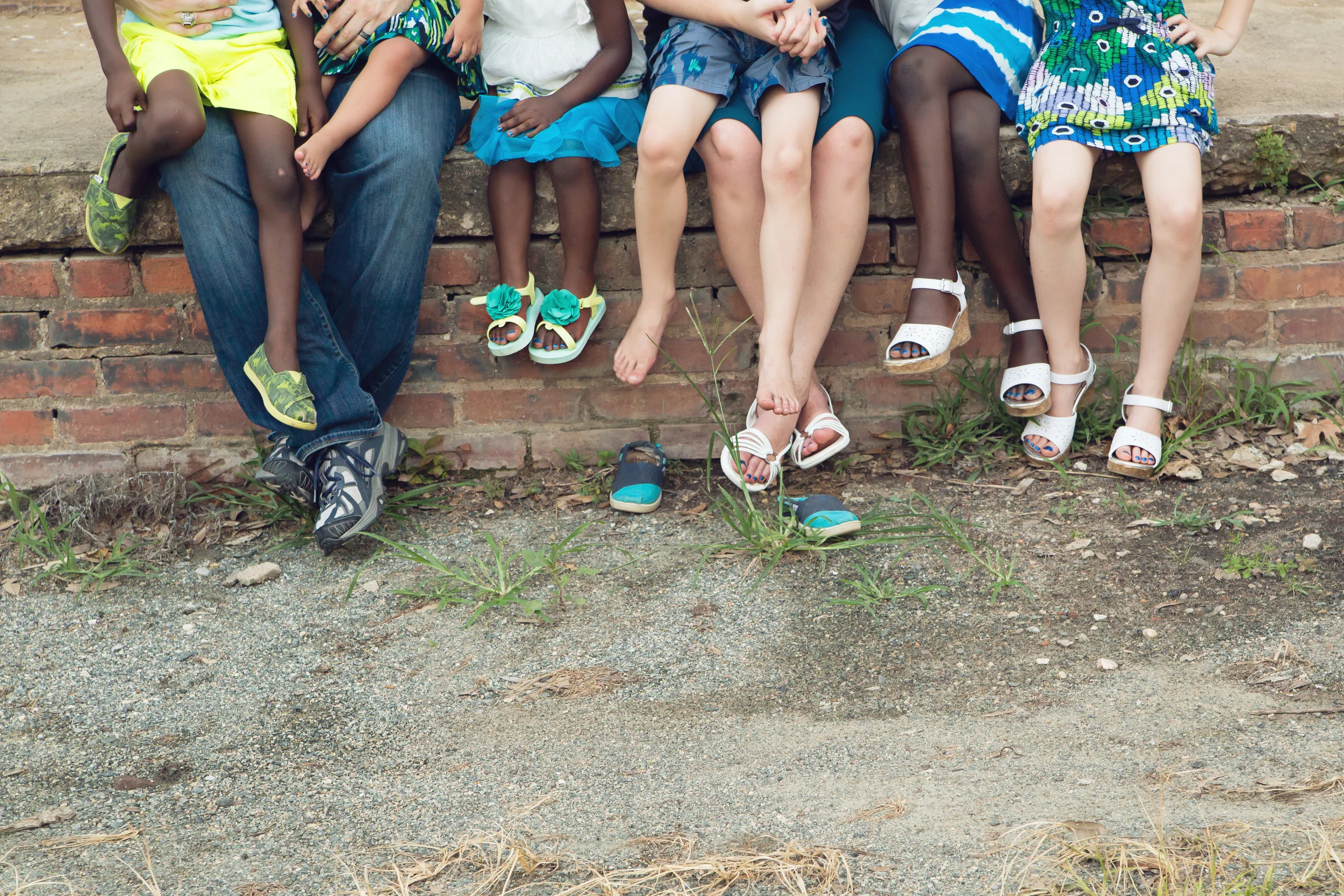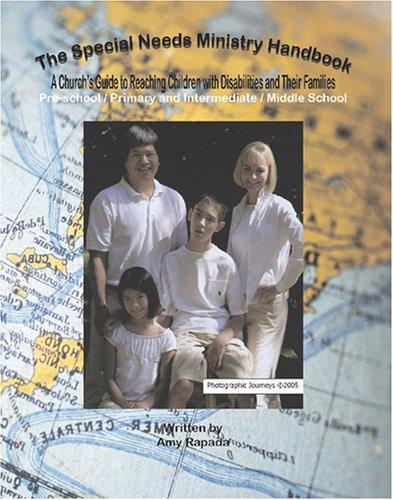Special needs ministry handbooks
/
When I was beginning special needs ministry work, I wanted an all-in-one guide. I wanted one book that was going to answer all my questions in one place, preferably with ready-to-use forms and policies.
I didn't find one. And you won't either.
Such a resource doesn't exist, my friend. Your church is unique. The needs there - for families with and without disabilities - are unique. Your existing policies are unique. Your building is unique. No guide is going to capture all the nuances you would need.
The good news, though, is that while no other church is exactly like yours, there are many that are similar. On Monday of next week, I will post links to other churches and some of their forms. Today, though, let's take a look at the print guides out there. I'm not really partial to any of them, so I'll just share the features I liked about each, which might help you decide if you're choosing amongst them!
 Title: Special Needs Smart Pages
Title: Special Needs Smart Pages
Subtitle: Advice, Answers, & Articles About Ministering to Children with Special Needs
Author: Joni & Friends
Publisher: Gospel Light, 2009
# pages: 331
Extras: 2 discs with printable resources and videos
What I like: Comprehensive (if you're looking for something practical, it's probably in there). The usefulness of the included discs.
What I don't like: More program- and character-driven (moralistic) than Gospel-centered. Info overload makes it hard to find the truly great stuff in the midst of a lot of good or just okay content and may do a disservice to new special needs ministry volunteers (even I get overwhelmed unless I'm approaching the book with a specific need). And, this is picky, but I'm not a fan of the title.
Best for: Those who already have a vision for special needs ministry but who need practical tools to support it
 Title: Autism and Your Church
Title: Autism and Your Church
I didn't find one. And you won't either.
Such a resource doesn't exist, my friend. Your church is unique. The needs there - for families with and without disabilities - are unique. Your existing policies are unique. Your building is unique. No guide is going to capture all the nuances you would need.
The good news, though, is that while no other church is exactly like yours, there are many that are similar. On Monday of next week, I will post links to other churches and some of their forms. Today, though, let's take a look at the print guides out there. I'm not really partial to any of them, so I'll just share the features I liked about each, which might help you decide if you're choosing amongst them!
 Title: Special Needs Smart Pages
Title: Special Needs Smart PagesSubtitle: Advice, Answers, & Articles About Ministering to Children with Special Needs
Author: Joni & Friends
Publisher: Gospel Light, 2009
# pages: 331
Extras: 2 discs with printable resources and videos
What I like: Comprehensive (if you're looking for something practical, it's probably in there). The usefulness of the included discs.
What I don't like: More program- and character-driven (moralistic) than Gospel-centered. Info overload makes it hard to find the truly great stuff in the midst of a lot of good or just okay content and may do a disservice to new special needs ministry volunteers (even I get overwhelmed unless I'm approaching the book with a specific need). And, this is picky, but I'm not a fan of the title.
Best for: Those who already have a vision for special needs ministry but who need practical tools to support it
 Title: Autism and Your Church
Title: Autism and Your ChurchSubtitle: Nurturing the Spiritual Growth of People with Autism Spectrum Disorders
Author: Barbara J. Newman
Publisher: Faith Alive Christian Resources, 2006
# pages: 136
What I like: Readability (unlike the others I've listed which are more like toolkits than books). Vivid analogies. Universal usability (in other words, it's autism-specific but much of it could apply to most other special needs). Simple ready-to-use forms in appendix. Straightforward title. Strong use of personal stories.
What I don't like: Advocates for an IEP-like form for church that she calls the Individual Spiritual Formation Plan (IFSP); I think this may create extra paperwork and communicate the wrong message to parents (who may expect the same types of settings and services at church as at school even when that's not appropriate). Once again, more program- and character-driven (moralistic) than Gospel-centered.
Best for: Churches wanting to welcome families with children who have autism spectrum disorders, especially if no one at the church knows much about autism; also good for other special needs (not just limited to autism spectrum disorders)
Subtitle: A Practical Guide to Including Children with Disabilities in Your Church Ministries
Authors: Malesa Breeding, Dana Hood, & Jerry Whitworth
Publisher: Cook Communication Ministries, 2006
# pages: 143
What I like: Begins with the groundwork that salvation belongs to everyone, whereas many other guides begin with the premise that we are all created in God's image (which is true, but not as central to why we do what we do. The image of God is why we shouldn't exclude anyone with special needs; the hope of salvation is why we should include them in meaningful ways). Three authors allow for more voices and pooled knowledge. Great forms integrated into the text. Love the title.
What I don't like: Forms aren't designed to be easily copied from the manual and used in ministry settings due to formatting issues (but this doesn't bother me because I like to make any forms our own anyway, with our logo and our wording). Also could provide a little info overload, but not as much as Special Needs Smart Pages.
Best for: Those engaged in children's ministry
Subtitle: A Church's Guide to Reaching Children with Disabilities and Their Families
Author: Amy Rapada
Publisher: CGR Publishing (a self-publishing print-on-demand group)
# pages: 179
What I like: Provides 31 weeks of biblically-based object lessons for a special needs ministry class (totally 80 pages).
What I don't like: Obviously self-published (formatting issues, typos, ppt slides as images, smileys, and so on). Presents the church as God's house rather than God's people. Overemphasizes the usefulness of special education professionals (making them sound like a must-have in every church rather than a nice-to-have). Proposed mission statement seems somewhat secular, makes no mention of Jesus, and takes responsibility for more about the child's development than the church should.
Best for: Someone who is already well-versed in special needs ministry and/or has another resource on hand who is in need of good concept lesson/center ideas and who is willing to overlook the lack of professionalism
There's also a guide called The G.L.U.E. Manual that I'm not personally familiar with. Considering that at $40, it's more than double the price of the other manuals (except the one from Joni & Friends, which offers a wealth of resources on the discs to justify the extra cost). I need to know more before I'm willing to purchase it, especially now when church budgets are tight. It is written by Barbara Newman, who wrote the autism book mentioned above, so odds are good that it's a solid resource.
And, finally, Key Ministry offers free resources and support to churches. Go to their website to find out more! My church is using some of their respite-related materials this fall.
What other special needs ministry books do you love, other than those I shared this week?


